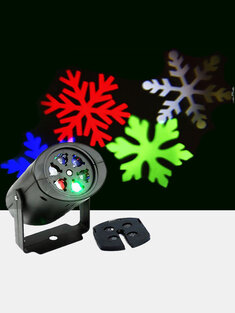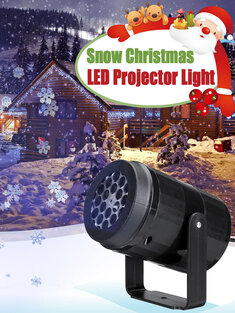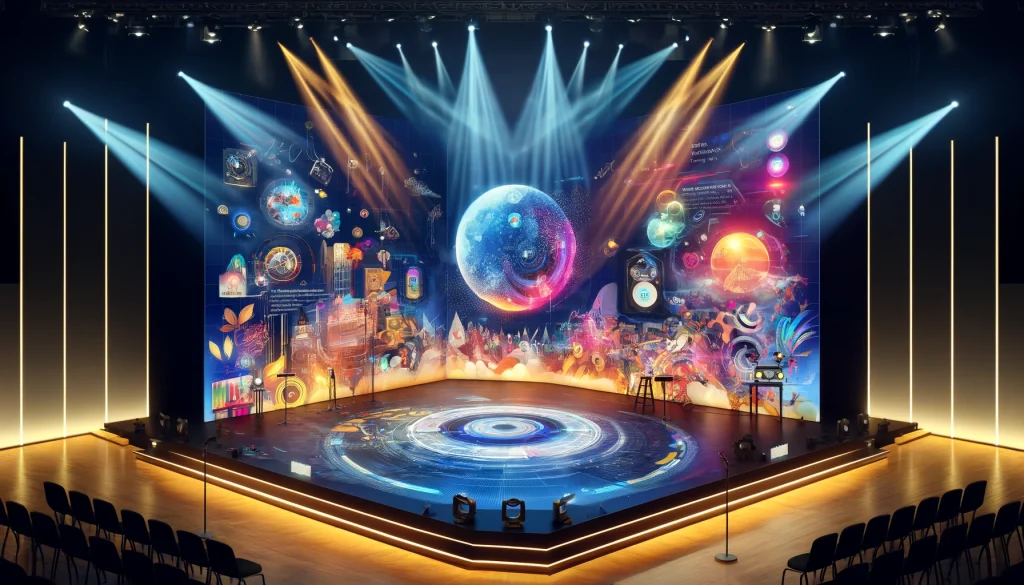Creating an immersive theatrical experience often hinges on the effective use of stage projections. This innovative technology can transform a simple stage into a dynamic and visually stunning environment, capturing the audience’s imagination and transporting them to different worlds.
Stage projections offer a versatile and cost-efficient way to enhance storytelling and set the scene in theater productions. As technology advances, so do the possibilities for breathtaking and creative stage design.
How to get started with stage projections
Embracing the world of stage projections can seem daunting at first, but with the right approach, it can be an exhilarating and rewarding process. Begin by understanding the basics of projection technology and the various types of content that can be projected, such as static images, animated sequences, or live feeds.
Investing in the right equipment is essential, and this starts with choosing a projector that matches the size and lighting conditions of your theater. Projector brightness and resolution will play a critical role in the clarity and impact of your projections.
Lastly, consider the surface onto which you will be projecting. It should be flat, lightly colored, and placed strategically to maximize visibility for your audience.
Best practices for using projections in theatre
To ensure that your projections truly elevate your theatrical production, adhere to some best practices. First, the content of your projections should align seamlessly with the storyline and artistic direction of the play. They should complement, not overpower, the on-stage action.
It’s also important to meticulously plan out the synchronization between live actors and projected elements. A misstep here can disrupt the flow and believability of the scene. Collaboration between directors, designers, and technicians is vital to create a cohesive narrative experience.
Remember to keep the technical aspects in check—maintaining proper focus, brightness, and positioning is crucial for clear and effective projections. Lastly, always have a backup plan; technical glitches are not unheard of in live theater.
Choosing the right projector for your stage
When selecting a projector, consider the best projector for theater stage based on your specific needs. Lumens indicate the brightness of a projector, with higher lumens necessary for larger spaces or environments with ambient light.
Contrast ratio is another key factor, as it affects the depth of blacks and the overall image quality. Additionally, the projector’s throw ratio will determine the distance needed between the projector and the screen to achieve your desired image size.
Look for projectors that offer keystone correction and lens shift features, which provide flexibility in projector placement and help maintain image integrity. Connectivity options are also important to ensure compatibility with your existing equipment and media sources.
Here are some ideas:









Combining projections with other media
Projections can be combined with other media forms like theatrical lighting and physical set pieces to create a rich, multi-layered visual experience. Using projections alongside LED screens or monitors can add depth to the stage and offer unique storytelling opportunities.
Integrating animation software with projections enables dynamic content creation, like animated backdrops or interactive elements that respond to actors’ movements. This synergy between various media forms can lead to innovative and memorable theatrical moments.
Effective projection design techniques
Creating impactful projections involves a blend of artistic vision and technical prowess. Start with a clear concept and storyboard that outlines the role of projections in the narrative. Experiment with different types of content—still images, animations, video footage—and consider how each can best serve the story.
Pay attention to color, composition, and timing. These elements must align with the show’s tone and pacing. Also, be mindful of the scale; projections that are too large or too small can distract from the overall effect.
Test your designs in the actual theater space to make adjustments for lighting and sightlines. This will ensure that what you envision is what the audience will experience.
Seamless scene transitions with projections
One of the major benefits of digital backdrops is the ability to create seamless scene transitions. Projections can quickly and effectively change the setting, mood, or time of day without the need for physical set changes.
Techniques like cross-fading between images or using motion to guide the audience’s attention can enhance the fluidity of scene changes. Additionally, working closely with sound designers can synchronize audio cues with visual transitions for a more immersive experience.
Essentials of stage projection for engaging theater audiences
Engaging theater audiences with stage projections requires a deep understanding of how projections can serve the story and evoke emotions. Effective use of projections can captivate audiences, but it’s important to maintain a balance so that they support rather than overshadow the actors and narrative.
Utilize projections to add texture and depth to scenes, whether it’s a realistic background or an abstract, mood-setting piece. Ensure that the content is high quality and relevant to the period or setting of the play.
Questions related to stage projection in theatre
What is a stage projection?
A stage projection refers to the use of projectors to cast images, videos, or patterns onto a surface, typically a screen, backdrop, or even the floor of a theatrical stage. This technique is employed to enhance visual storytelling and create dynamic scenes without physical set changes.
Stage projections can include everything from simple backdrops to complex animations that interact with live actors, providing a versatile tool for directors and designers.
How to use projection on a stage?
To use projection on a stage, first determine the content that aligns with your production’s themes and scenes. Then, select an appropriate projector based on the size of your stage and ambient light conditions. The content should be pre-produced and tested thoroughly to ensure smooth integration during live performances.
Work closely with lighting designers to ensure projections are visible and not washed out by stage lights. Consider the timing and cues necessary for syncing projections with actors and stage action.
How to make projections for stage?
Making projections for the stage involves creating or sourcing visual content that complements the narrative of a production. This could involve designing static images, animations, or compiling video footage. Utilize software to edit and sequence the content in line with the script and director’s vision.
Once the content is ready, it must be adapted to the projector’s specifications and the stage dimensions. Trial runs in the actual theater space are crucial for fine-tuning the visual impact.
What is projecting in theatre?
Projecting in theatre is the act of displaying visual elements onto a surface as part of a stage production. It’s a broad term that covers the technical aspects, such as the use of projectors and screens, as well as the creative process of designing content that enhances the storytelling of a theatrical piece.
The aim is to provide an additional layer of narrative, mood, and setting, effectively supporting the live performance without drawing attention away from the actors themselves.
Utilizing stage projections is not just about technological innovation; it’s about expanding the creative horizons of theatre. With thoughtful design and careful execution, projections can become a vital part of the theatrical experience, opening up new possibilities for storytelling and audience engagement.



